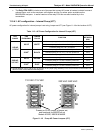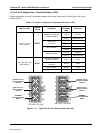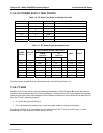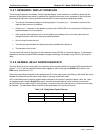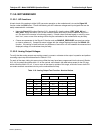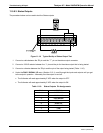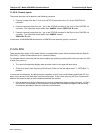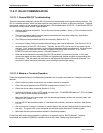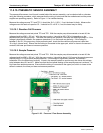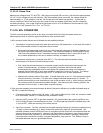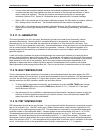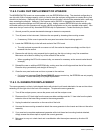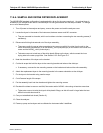
Troubleshooting & Repair Teledyne API - Model 200EH/EM Operation Manual
262
11.5.11. RS-232 COMMUNICATION
11.5.11.1. General RS-232 Troubleshooting
Teledyne Instruments analyzers use the RS-232 protocol as the standard, serial communications protocol. RS-
232 is a versatile standard, which has been used for many years but, at times, is difficult to configure. Teledyne
Instruments conforms to the standard pin assignments in the implementation of RS-232. Problems with RS-232
connections usually center around 4 general areas:
Incorrect cabling and connectors. This is the most common problem. See 6.11.3 for connector and pin-
out information.
The communications (baud) rate and protocol parameters are incorrectly configured. See Section
6.11.9 on how to set the baud rate.
The COM port communications mode is set incorrectly (Section 6.11.8).
If a modem is used, additional configuration and wiring rules must be observed. See Section 6.15.2.6.
Incorrect setting of the DTE - DCE switch. Typically, the red LED is on as soon as you power up the
analyzer. If not, contact the factory, as this indicates a problem with the motherboard. As the analyzer
is connected to the computer with a cable, the green LED should also illuminate. If not, set the
DCE/DTE switch to the other position. See also Section 6.11.5.
Note that some laptops do not enable their RS-232 port when in power-saving mode. In this case,
connect the laptop and start either APICOM or a Hyperterminal window and start communicating with
the analyzer. This will enable the serial port on the laptop and the green LED should illuminate. You
may have to switch back and forth while communicating to get the right setting.
11.5.11.2. Modem or Terminal Operation
These are the general steps for troubleshooting problems with a modem connected to a Teledyne Instruments
analyzer.
Check cables for proper connection to the modem, terminal or computer.
Check the correct position of the DTE/DCE as described in Section 6.11.5.
Check the correct setup command (Section 6.15.2.6).
Verify that the Ready to Send (RTS) signal is at logic high. The M200EH/EM sets pin 7 (RTS) to greater
than 3 volts to enable modem transmission.
Make sure the baud rate, word length, and stop bit settings between modem and analyzer match, see
Section 6.15.2.6 and 6.11.8.
Use the RS-232 test function to send “w” characters to the modem, terminal or computer; See Section
6.11.10.
Get your terminal, modem or computer to transmit data to the analyzer (holding down the space bar is
one way). The green LED on the rear panel should flicker as the instrument is receiving data.
Make sure that the communications software is functioning properly.
Further help with serial communications is available in a separate manual “RS-232 Manual”, Teledyne
Instruments part number 013500000, available online at http://www.Teledyne-api.com/manuals/.
04521C (DCN5731)



